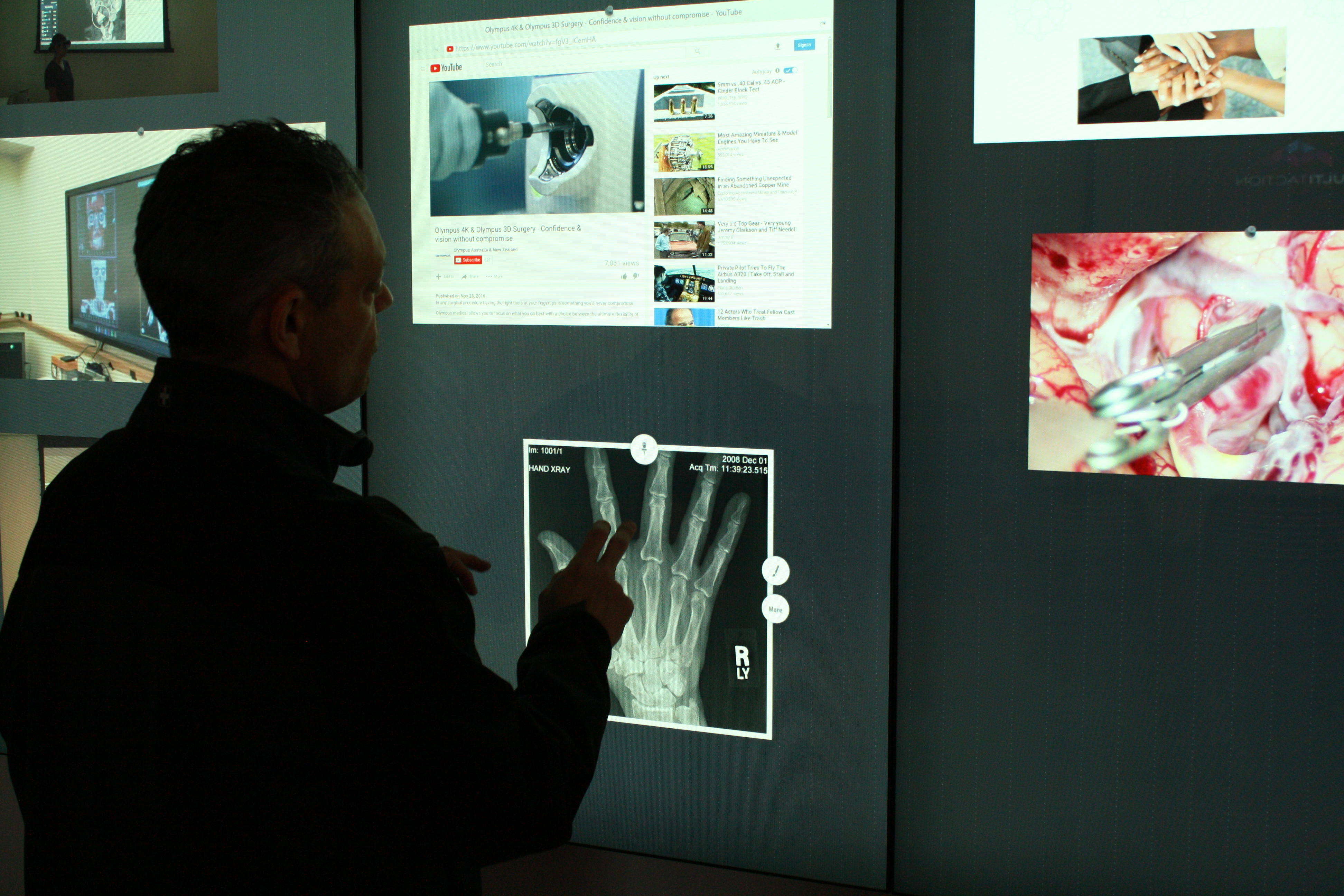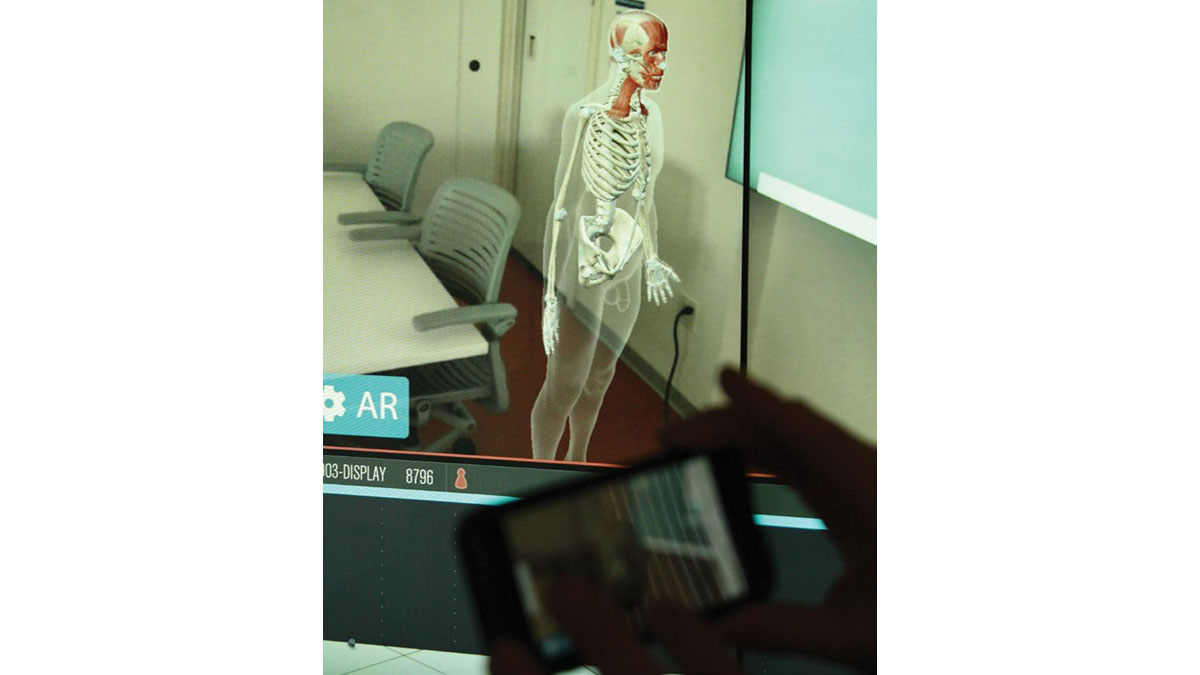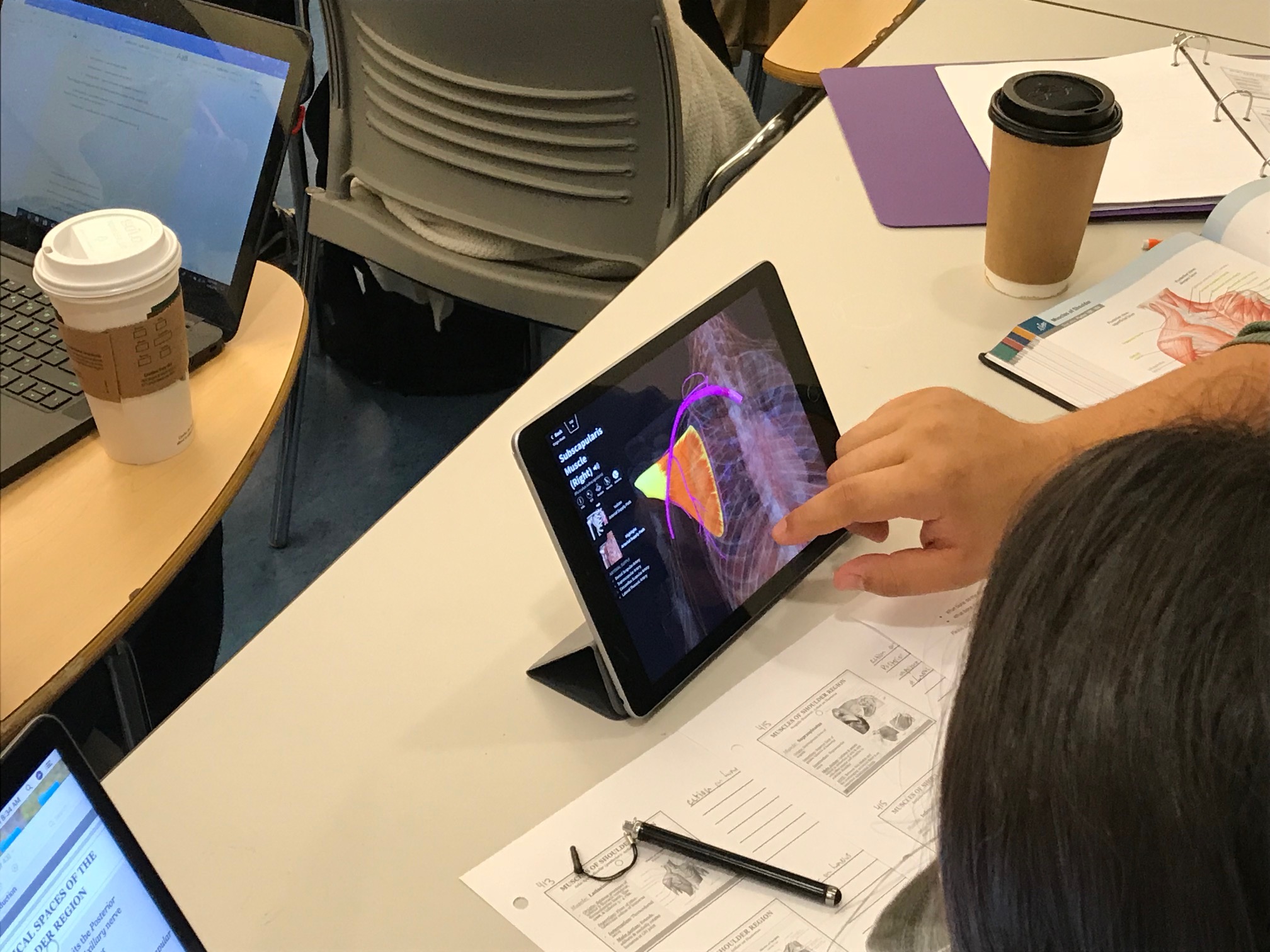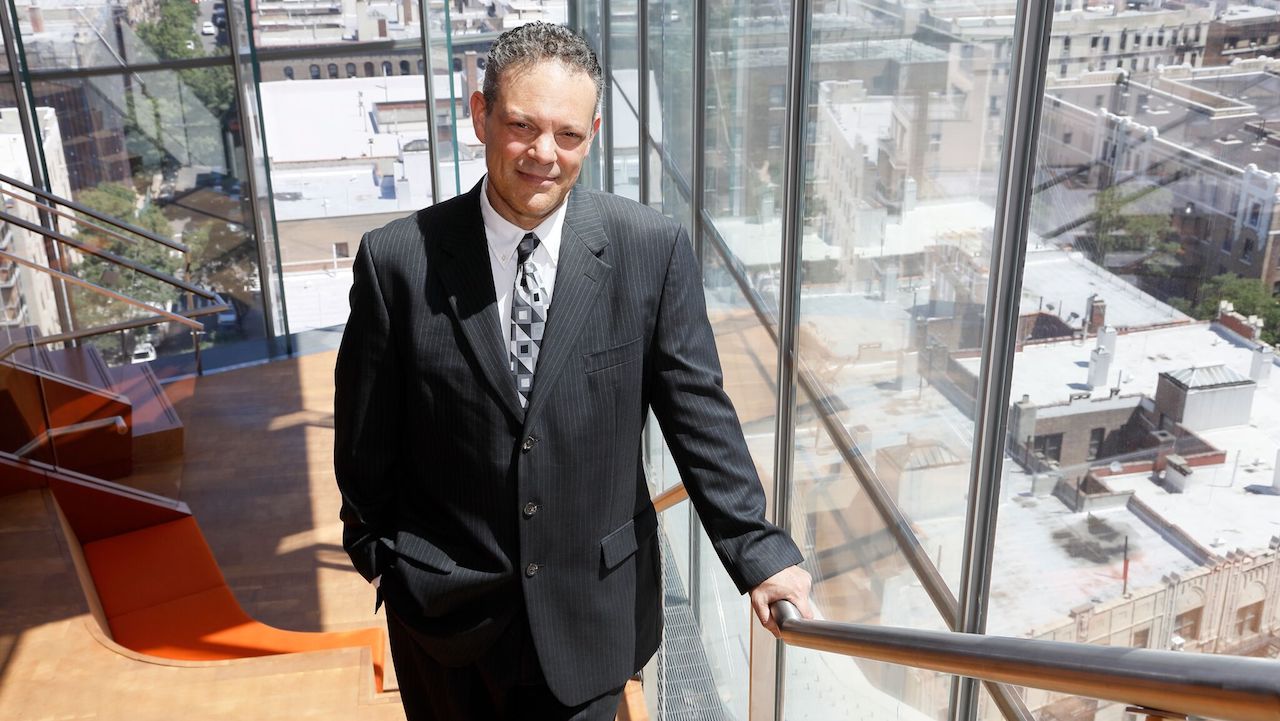When it comes to cutting-edge video technology, there is perhaps no industry that demands the precision and detail of the medical field. From telemedicine to remote surgery, technology is transforming how healthcare is practiced like never before—and it’s also shaping the way it’s taught. In the past, medical students read about diseases in books; now, they can examine them inside virtual bodies with augmented reality. The sky is the limit.
And when it comes to teaching medicine, Columbia University has few peers. Ranked number six in the nation in the latest U.S. News and World Report list, Columbia University Medical Center (CUMC) is home to a number of schools, including the College of Physicians and Surgeons, the oldest medical school in the U.S. and the first to award the M.D. degree. Located in the Washington Heights neighborhood of Manhattan, the Ivy League institution is truly world class—and so is its AV, thanks in no small part to Jonathan Kornberg, its director of instructional technology.
“We are reaching new heights in classroom technologies, standards of practice, and learning platforms,” said Kornberg, who is in charge of designing and managing all of CUMC’s audiovisual systems. “With rapidly changing pedagogies, and active-and team-based learning, collaborative educational tools and methods are now a necessity in all universities and educational models.”
ROCK-SOLID BACKGROUND
Like many of us in the industry, Kornberg found his way to AV through music. “I was a big-time musician, signed to a label,” he said. “But then I went to the production side of things, and worked for some really big artists all over the world as a stage monitoring engineer.” During this time, he worked with one of the first artists to start doing device over IP in concert venues. “We were experimenting with switches, and bringing our own Cisco switches in behind the mixing rack. So I started learning from there.”
When his daughter was born, however, he decided he needed to call it quits from the rock ‘n’ roll way of life to be with his family. “I took all of that knowledge and moved it into the technology world,” he said. While working in New York City as an AV tech and production manager, a huge opportunity arose. “I was recruited to work [at Columbia]; someone found me and said ‘We need you to come here and change the entire face of the school, top to bottom. Everything is old, it’s all broken, nothing matches, we’ve got cables sticking out of the walls.’”
Kornberg said that this offer, which came in 2009, started off as two-year plan. “They gave me a budget and said ‘We want everything changed. What can you do for us?’”
LAYING THE GROUNDWORK
Korberg, like any good AV tech, knew where to start: standardize everything. Unlike many at the time, though, he was dead set on an end-to-end AV-over-IP system.
“We had to change switches, we had to change the whole shebang,” he said. Eventually, though, the campus was humming along on Crestron Digital Media (DM) switches. “Everything in the entire school is all networked, it’s fully enterprise wide,” Kornberg said. “We’ve been solidified for a while, as far as AV over IP. We have thousands of devices.”
When Crestron came out with Fusion, Kornberg and his team built these capabilities into the system. “Everything is managed; we have dashboards,” he said. “I’ve even gotten to the point where my guys can walk around with a [Microsoft] Surface and just control every single thing in the entire school. They can turn anything on, they can see anything, they can view anything.” There are eight technicians on his team, and three who float around to address issues as they arise.
“It’s a full team effort, and we’re really, really tight,” Kornberg said. “And it’s a lot of technology, the amount of devices we’ve put on this network.” Keeping things better organized and secure, the AV deployments now have their own subnets. “We created our own AV subnet and our own AV VLAN,” he said. “All of our devices are segregated onto their own separate VLAN, so there’s no crosstalk between a PC in an office.”
TEAMWORK
Facilitating the operation of the networked AV system requires a great deal of coordination, not just among the audiovisual team, but with the IT group. “It took a while for us to start getting along, and for them to understand really what AV over IP was, and what the protocols were going to be for this new world of what we were doing,” Kornberg said. “It took about a year for them to fully understand it.”
Luckily, being in New York City, there were plenty of resources Kornberg could draw upon to demonstrate his goals. “I actually started taking guys to Crestron to show them what I was doing,” he said. “I took them to the Javits Center to explain the partnerships between companies like Microsoft and Cisco.”
In addition to IT, he shared that having the facilities team on your side is important, as well, and said that treating these key people to a nice dinner can go a long way toward solidifying the relationship.
DOING THE JOB RIGHT

Kornberg recently had the opportunity to outfit the Roy and Diana Vagelos Education Center—the newest building on the CUMC campus—with state-of-the-art technology. Though it was quite an undertaking, he and his team tackled all of the AV integration themselves.
“We do everything in house; no consultants, no outside companies at all,” he said. “Everything is designed by me through CAD. We do all of our own installs, all of our own purchasing, all of our POs.” He said that this approach saves money, time, and is simply more efficient. And when it comes to expertise, there’s certainly enough to go around: Kornberg said that he and another principle member of the AV team have about 90 certifications between them. “I’ve got Cisco, Crestron, Dante, Biamp… the list goes on and on and on,” he said.
NEW TECH
Kornberg said the university had specific requirements for instructional technology in the new building. They wanted a series of two-sided rooms with a projector in the front for traditional lectures, and a large touch-enabled display in the back for collaboration—and they wanted it all wireless and BYOD enabled.
When it came to the touchscreen side, the university was looking for a simple flat panel; he then informed them of the better solutions on the market. “Then my CIO called me and said ‘We want you to fly to the moon with touchpanels. We want you to go as far as you can possibly go.’ And I said, ‘This is not going to be cheap; this is going to be a huge project for me.’ And they said, ‘We don’t care about the money; do it.’”

So, Kornberg and his team equipped these rooms with MultiTaction video walls, which combine three proprietary, narrow-bezel, 55-inch flat panels in portrait orientation into a large, responsive video display. He met the Finnish company at InfoComm a few years back, and formed a partnership with them.
“We were the first major medical school to have this technology,” he said. “You have to think of [the displays] as a giant canvas—the software is called Canvus. Basically, you can create multiple screens and multiple canvases to pin everything to and present to. It’s a huge super-micro PC with all kinds of video outs.” It also has BYOD screen mirroring through Mersive, fulfilling the university’s connectivity requirements. “We can be collaborating side by side, and there’s almost no latency,” he said.
The system is also very simple for instructors to use. Each professor is given a wallet-sized card called a codice card. Each day, they load their lesson from their computer to a network shared drive, then when they arrive in the room, they simply press the card to the MultiTaction display, and near-field technology brings all of the content into the system. “You show up here with no USB, nothing; just bring your card, and your shared folder comes up,” he said. “Once I log in, I have all of the information on my shared folder. And it’s completely encrypted, because we have HIPAA here.”
NEXT TECH

To further the functionality of the new rooms, Kornberg partnered with several medical companies to build software for Columbia for the interactive displays. “The students can come here and use these as a reference,” he said. “Everything is virtual. You can go to any part of the body and start dissecting.” Some of these include augmented reality applications such as 3D4Medical and Visible Body, which places a virtual cadaver on a table in the room. “They’re putting them in ORs and going over to the virtual table and looking into the heart valve, and blowing it up to see details,” he said.
Kornberg is also experimenting with virtual reality. “We’re working on a VR project where we’re going to be putting [Microsoft] HoloLenses on students,” he said. “We’re going to start developing our own content for specific needs. You can also take scans from the operating room or emergency room and bring them into this scenario, and work on them virtually. And if you really want to go crazy with it, you could have a doctor in an OR in San Diego talking to this OR here, and saying ‘We have a problem with this vascular valve, I’ve got to go in and see what’s going on.’”
While there’s certainly potential with VR, Kornberg is approaching it with caution. “If you buy 30 HoloLenses, how do you manage them, where are they kept when the class is over, what if they break?” he said. “But AR is exploding because you can pop the images on top of a specific setting with no HoloLens, and you can work that way. Plus, the AR is accessible through the AR kit on a lot of iPads and iPad Minis and phones. So it’s blowing up.”
MAKING IT COUNT
When deploying technology at this scale, you had better be sure it’s going to get the maximum utilization. This was something Kornberg studied carefully before pulling any triggers.
“I bring the entire faculty in from an entire school,” he said. “For example, I brought the physical therapy (PT) group in for five different sessions and I actually got really stupid with it. I told them I want you to stand in the room and feel how you’re teaching; I want to understand what you feel when you’re teaching. Is this too bright for you? (We used to have professors complain that everything was too bright, that the light is blasting and they couldn’t teach). We placed people around the room and I brought them into multiple sessions and brought boxes as devices. ‘How do you feel? Can you see the students from here?’” This degree of in-depth analysis enabled Kornberg to create a custom solution tailored to their needs.
And, studies like this are ongoing. “I’ve been meeting once a month with different departments and going over constant pedagogical changes, constant curriculum changes, constant updates,” he said. He’s also on a number of committees, and regularly attends and speaks at medical and pharma conferences and formulates partnerships with people to see what else is available.
CUSTOMIZED CLASSROOMS
One recent integration Kornberg is particularly proud of is his team’s work with classrooms for the nursing, physical therapy, and occupational therapy schools, which occupy an old landmarked building on campus.
“This was a long, intricate project,” he said. It involves two rooms, with one as an overflow. “They needed so many different things. So what we’ve done is we have tons of sources.” The rooms have an exam camera, a room camera, multiple displays, and a wireless Mersive Solstice Pod, an iPad Pro, and a joystick system for controlling the cameras. “You can have control of both rooms with this one joystick,” he said. “You can see the cameras in both rooms. You can see the camera from this room on your touchpanel, and control the cameras from both rooms.
“Every aspect in this room is customized to the users’ needs, and they use all of it. It’s been an unbelievably successful project. The reviews have come in and it’s just a top-rated technology and PT department.”
TEACHING AND LEARNING
Kornberg’s core philosophy for deploying systems is simple: “My biggest thing is that technology should not get in the way of education,” he said. “If it does, you’ve got a problem.”

With this always in mind, he’s been working to enable two pedagogical innovations. The first he calls “360 learning.” “The students can learn in the classroom, in the dorm, in the common room, or in huddle spaces,” he said. “We always have the opportunity to discuss learning, and have access to everything at all times. Everything is recorded with lecture capture.”
And since recorded lectures can sometimes lead to students skipping class to simply watch the lessons on their own time, Kornberg advocates an approach he calls “flipped classrooms,” where the professors send the lecture materials the night before, and enforce attendance. “The students are up on this, they’re ready to rock and roll, and it’s exciting,” he said.
PRESCRIPTION FOR SUCCESS
What can other technology managers learn from Kornberg’s success? It’s starts with developing your team. “We’ve turned our techs into real techs, certified in everything,” he said. “The team we have here is incredible. The guys we have here, we’re like a ninja team. It’s unbelievable. We’re like the New England Patriots: we go out and kick ass and just level everybody.”
In addition to working closely with the end users to ensure you’re provisioning the right technology, it’s also key to be proactive in promoting its utilization once installed. “You’ve got to find your champions,” Kornberg said. “We have five or six big-time champions who are loving everything we’re doing. And then they start spreading the word, and then all of a sudden someone says ‘Wow, you’re having a lot of success with that class; how are you doing that?’ And now they’re developing and modeling that.”
Lastly, always be learning. “I’m constantly working to stay on top of technology; I’m borrowing stuff, people are sending me demos,” he said. “This is the most exciting time, right here and right now. This is the biggest jump that we’re going to have.”

